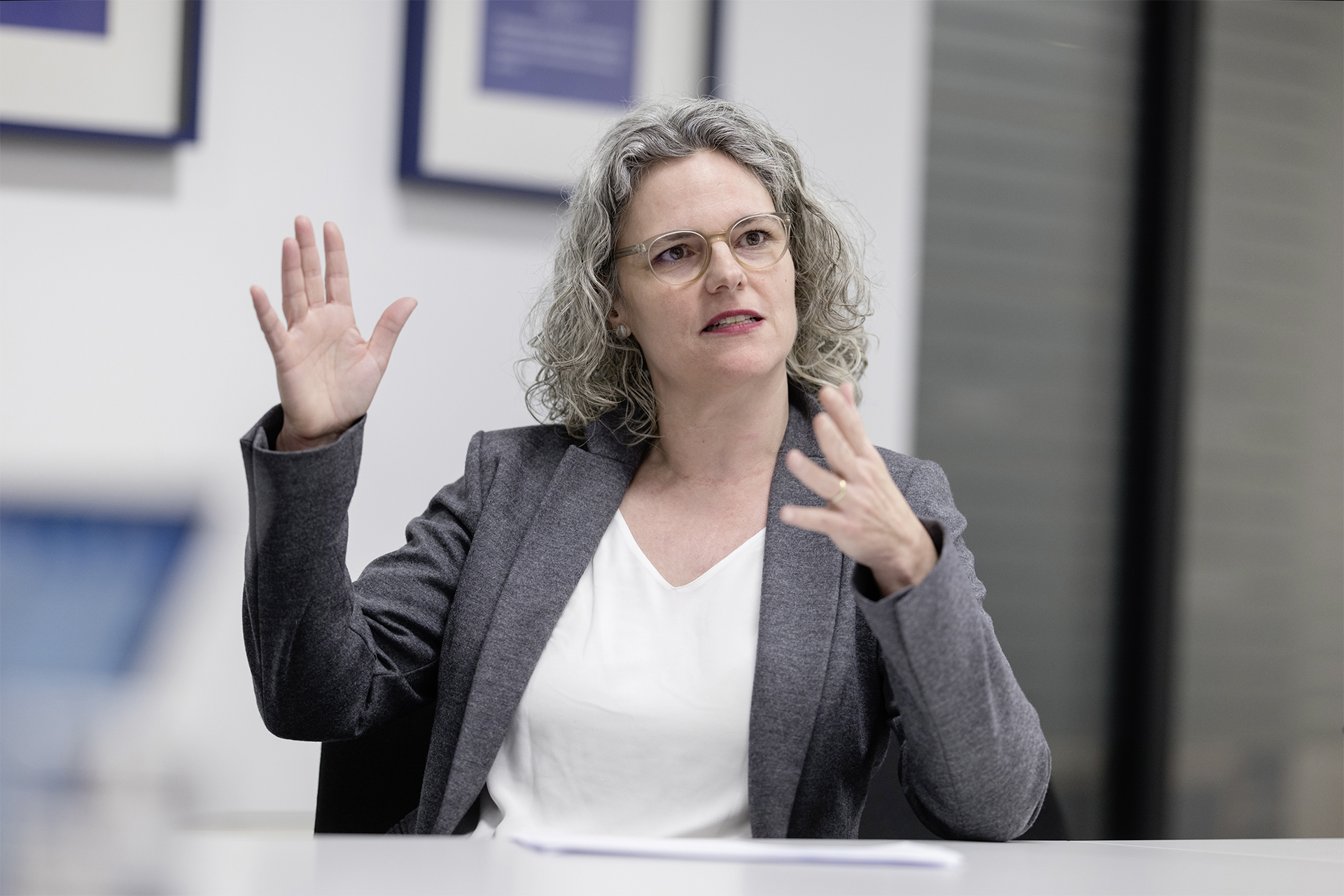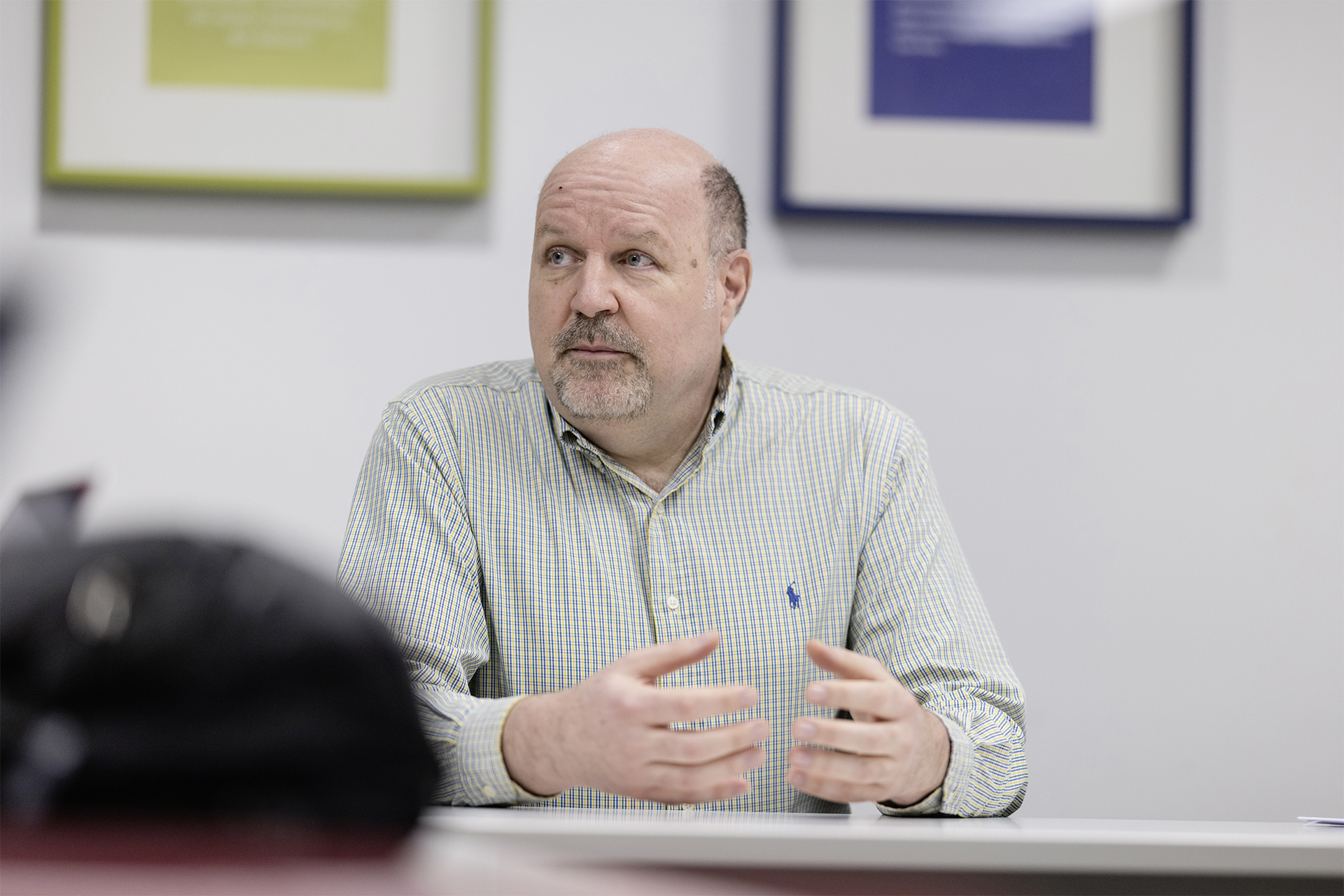Presented
Authorising medicinal products, step by step From establishment licence to authorisation
A number of requirements must be fulfilled before a medicinal product can be authorised in Switzerland – starting with a correct establishment licence, passing through many reviews and ending with the official authorisation. Georges Meseguer, Head of Certificates and Licences, and Sandra Zaugg, Head of Authorisations, explain the individual steps and describe the current challenges.
Step 1: The establishment licence
Applications first come to Georges Meseguer at Swissmedic. The manufacturer needs to prove that their company headquarters are located in Switzerland before an establishment licence can be issued at all. “This is vital”, the Head of Certificates and Licences confirms. “The company must then submit an application for a licence that we review, and we subsequently issue an inspection order. The inspection is then performed either by one of the four regional inspectorates in Basel, Zurich, Fribourg or Mendrisio or by Swissmedic itself.” The company’s quality management is reviewed during the inspection. The licence must cover all of the activities carried out by the company. The inspecting agency writes a report after the inspection. “Depending on what is in the report, companies have four weeks to correct any deficiencies. Only then do we grant the licence requested by the company.”
The fastest a licence can be granted is two months. “But normally this process takes between six and twelve months. This is because the process for granting an establishment licence to manufacture or distribute medicinal products is divided into several steps, each with requirements that the company needs to fulfil. In addition to quality requirements, the company must also have enough qualified staff and define a ‘Qualified Person’ who is familiar with the processes within the company, the guidelines and the legislation. There also needs to be clarity about what exactly happens, for example, when a product recall is necessary, and the procedure for dealing with a counterfeit medicinal product in Switzerland must be defined, even though this is a rare occurrence”, Meseguer explains.
Step 2: The criteria
Most of the documentation submitted with authorisation applications is uploaded by the companies via an electronic portal. “It is still possible to submit documents in paper form”, says Sandra Zaugg with a laugh, “but the times when up to 1,000 standard binders were delivered by lorry are now history.” The team then reviews the documents for completeness and legibility. “There are clear requirements, and fulfilment of them by the applicant company is documented in a regulatory report. Swissmedic reviews, for example, whether the medicinal product has already been submitted for authorisation, whether there are similar products on the market, and whether the designation of the medicinal product complies with the legal requirements. This report is ultimately sent to expert assessors working in the three areas of quality, preclinical and clinical.
Step 3: The submission
An application for authorisation of a new medicinal product is reviewed in terms of quality, safety and efficacy. Sandra Zaugg explains the different modules of the authorisation dossier that have to be submitted by the applicant: “All the documents concerning the manufacture of the medicinal product are submitted in one part. Medicinal products are manufactured in compliance with the international rules of Good Manufacturing Practice (GMP). These requirements define the criteria for the premises, the staff, the raw materials, documentation and the manufacturing process. The preclinical documentation is submitted in a second part. This comprises all the studies that are performed before the medicinal product comes into contact with a human being for the first time, some of which are carried out in parallel to tests in humans – such as tests using cells and animal studies. This documentation is intended to facilitate a better understanding of how the medicinal product works and to predict undesirable effects, for example. The mode of action is evaluated in cell tests, and the undesirable effects observed in animals are extrapolated to humans if possible.
The third and largest part of the documentation comprises the clinical documents. In this part the manufacturer submits all the trials that have been performed in subjects and patients to identify the medicinal product’s mode of action in humans, for example, and its undesirable effects, or to establish the correct dosage. A further part of the authorisation dossier contains drafts for the Information for healthcare professionals, for the package leaflet provided for patients, for the designation of the medicinal product and for the forms specific to the country in question. Every country has its own forms derived from the national legal framework.”
Step 4: The preliminary decision
The application goes through several evaluation phases at Swissmedic. The parts of the documentation mentioned above are always evaluated in parallel by our internal experts. In the first phase the submitted documents are assessed to see if there are any unanswered questions, meaning that additional documentation must be requested from the applicant. If this is the case, Swissmedic sends a List of Questions containing questions referring to all parts of the documentation. The company is given a deadline within which it must respond. Its responses are analysed very carefully by Swissmedic. “We reach our decision once all the documents, including these responses, have been evaluated by the Swissmedic assessors”, explains Sandra Zaugg. “The decision and any outstanding questions are discussed with an external expert committee. The Human Medicines Expert Committee (HMEC) is made up of experts from different medical and scientific disciplines who have documented experience in research and clinical practice. At the end of this process we inform the applicant of our decision in the form of a “preliminary decision”. This means that the applicant is informed whether our intention is to approve or reject their application”, she continues.
Step 5: The official decision
If the applicant receives a positive preliminary decision for their new medicinal product, this is a good sign but it doesn’t mean that authorisation has actually been granted. “In some cases we issue an approval with preconditions”, Sandra Zaugg explains. “If, for example, warnings still need to be included, elements of the product packaging are not 100% right, or the Information for patients is not yet written clearly enough for laypeople, the applicant needs to make further modifications.” These preconditions must be fulfilled before the authorisation can be issued definitively. Two examples: Use of a medicinal product must be restricted for patients with kidney disease because its efficacy and safety have not been adequately demonstrated in this patient group. Or the quality does not fully meet the requirements. “Swissmedic grants no leeway in this area”, Sandra Zaugg states. At the end of the review, Swissmedic informs the applicant of its decision in an “official decision”. The applicant can lodge an appeal against this official decision with the Federal Administrative Court.


The product certificate
An authorisation granted by Swissmedic is valid only in Switzerland. If the manufacturer also wants to distribute the medicinal product in a developing country, for example, the authorisation procedure in that country can be shortened by submitting a confirmation from Swissmedic. “In these countries, in particular, the authorities often don’t have the necessary expertise or resources to review these applications in their entirety”, Georges Meseguer explains. “We confirm our authorisation decision by issuing a ‘product certificate’. This means that the foreign authority doesn’t need to check everything again but can trust our decision. This enables authorisation to be granted more rapidly in these countries”, he adds. Swissmedic issues up to 7,000 of these product certificates every year for use in global markets. Authorisation extensions, which are relevant if a new dosage has been approved for a medicinal product, for example, can also be confirmed by Swissmedic for other countries by means of a product certificate.
A final word: Challenges
The particular risk in the field of authorisations is always the benefit-risk assessment, which must be undertaken entirely with the patient’s interests at heart. “One central question here is which uncertainties and side effects can be accepted to enable an innovative medicinal product to be authorised as quickly as possible and new, promising treatments to be made available to patients in Switzerland promptly”, Sandra Zaugg explains. “A medicinal product intended to treat a life-threatening disease such as cancer is evaluated differently in this respect to a cold remedy. The benefit-risk assessment needs to be positive in both cases, but patients are willing to accept more severe side effects with a promising cancer therapy that may be able to cure them. The heavy workload is also a challenge. Last year alone we reviewed some 12,000 applications.”